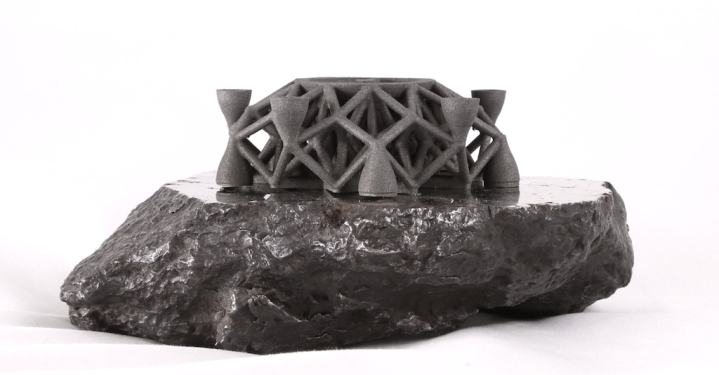
You know Planetary Resources? The company that wants to mine asteroids and harvest valuable raw materials from space? Well, we just bumped into them on the show floor at CES, and they brought something incredible with them.
The object above is a small, 3D-printed prototype of a spacecraft that Planetary Resources is developing. But that’s not what’s impressive about it. The thing that makes this object so amazing is the fact that it’s made entirely out of alien metal that’s not from Earth. How crazy is that?
Now, to be fair, it’s important to note that PR didn’t actually go out and snatch an asteroid out of interplanetary space to make this happen. Instead, they recovered a hunk of meteorite from the Campo Del Cielo craters near Argentina — the site of a meteor crash that happened over 4,000 years ago. So technically PR got the meteor from Earth, but at the end of the day, it’s still a hunk of metal that didn’t originate on this planet, which is pretty wild.
To make it into something new, technicians then pulverized the meteor into a fine powder, and processed it in the new 3D Systems ProX DMP 320 — an industrial 3D printer that makes metal objects via a technique known as direct metal laser sintering. For the curious, this technique involves a high-powered laser that’s aimed at a bed of fine metal particles to selectively melt and fuse them together layer by layer.
The printing technique isn’t new, but we’re pretty sure that Planetary Resources is the first company that’s ever used it to make something out of alien metal.
Editors' Recommendations
- NASA is testing a 3D printer that uses moon dust to print in space
- 3D-printing technique produces tiny, highly detailed objects in seconds




